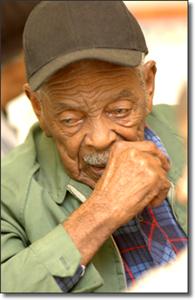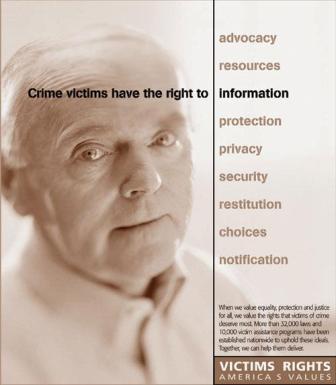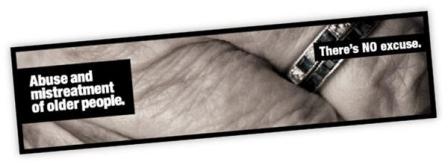Elder Abuse

"For many years my nephew was the source of both my comfort and my distress. Sometimes he was good to me. And sometimes I had to protect myself from his anger. When I was hospitalized he took my safe deposit box key and my checks. He took everything I had in the bank. I haven't seen him since. What's to become of me at 84? I have nothing left. It hurts when someone you love steals from you."
- Testimony of an abused elder
Reports from the National Center on Elder Abuse, Washington, DC (2005) indicate:
 According to the best available estimates, between 1 and 2 million Americans age 65 or older have been injured, exploited, or otherwise mistreated by someone on whom they depended for care or protection. (Elder Mistreatment: Abuse, Neglect and Washington, DC: National Research Council Panel to Review Risk and Prevalence of Elder Abuse and Neglect.)
According to the best available estimates, between 1 and 2 million Americans age 65 or older have been injured, exploited, or otherwise mistreated by someone on whom they depended for care or protection. (Elder Mistreatment: Abuse, Neglect and Washington, DC: National Research Council Panel to Review Risk and Prevalence of Elder Abuse and Neglect.)- Estimates of the frequency of elder abuse range from 2% to 10%. (Lachs, Mark S., and Karl Pillemer. October 2004. “Elder Abuse, ”The Lancet, Vol. 364: 1192-1263.)
- Data on elder abuse in domestic settings suggest that 1 in 14 incidents, excluding incidents of self-neglect, come to the attention of authorities. (Pillemer, Karl, and David Finkelhor. 1988. "The Prevalence of Elder Abuse: A Random Sample Survey," The Gerontologist, 28: 51-57.)
- Current estimates put the overall reporting of financial exploitation at only 1 in 25 cases, suggesting that there may be at least 5 million financial abuse victims each year. (Wasik, John F. 2000. “The Fleecing of America’s Elderly,” Consumers Digest, March/April.)
- In 2003, state Long Term Care Ombudsman programs nationally investigated 20,673 complaints of abuse, gross neglect, and exploitation on behalf of nursing home and board and care residents. Among seven types of abuse categories, physical abuse was the most common type reported. (National Ombudsman Reporting System Data Tables. 2003. Washington, DC: U.S. Administration on Aging.)
- In Virginia, during the 2007 fiscal year, Adult Protective Services received 13,515 reports of elder/adult abuse and maltreatment. 65% of these, almost three-quarters (8,217), were substantiated. Neglect, fiscal, and physical abuse were the most commonly reported. (2007 Adult Services Program Report. 2008. Virginia Department of Social Services)
 Some common signs of elder abuse, neglect, or exploitation:
Some common signs of elder abuse, neglect, or exploitation:
- Injury that has not been cared for properly
- Personal belongings such as art, silverware or jewelry are missing
- Inadequate clothing or personal items when there appears to be enough money to provide for them
- Burns, welts, scratches, bruises, fractures
- Evidence of inadequate care
- Confinement (locked in a room or tied up)
- Mal-nourishment
- Severe anxiety, fearfulness, depression
- Property or savings are mismanaged or stolen

Help Break the Silence
The abuse of the elderly is cloaked in silence. It has been kept secret too long. Victims are not likely to talk freely about their abuse. Friends and neighbors who suspect that abuse is happening may be reluctant to get involved. The abuse will not stop until the silence is broken.
Abuse hurts at any age... Help Stop The Hurting

Take time to reach out to caregivers who are overwhelmed with care giving tasks. Report suspected abuse to Adult Protective Services at your local department of social services. (see below)
For more information on elder abuse, contact one of the following resources.
State Government Agencies
- Virginia Adult Protective Services
- Virginia Department of Health, Center for Quality Health Care Services, Long Term Care Division
- Virginia Department of Social Services Domestic Violence Program
- Virginia Long Term Care Ombudsman
- Virginia Office of the Attorney General
Hotlines and Help lines
- Elder Abuse Hot Line: 1-888-83-ADULT or 1-888-832-3858
- Family Violence/Sexual Assault Hot Line: 1-888-838-8238
- NCEA Hot Line: 1-800-677-1116
Laws and Regulations
Virginia Code Ann. §§ 63.2-1605 Adult Protective Services
Sources for Statistics
- The National Center for Elder Abuse
- Virginia Department of Social Services: Annual Statistical Reports
- Virginia Department of Social Services: Who Are Mandatory Reporters for APS?
Other Resources